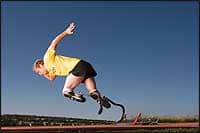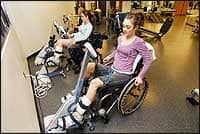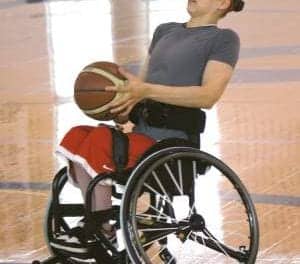In June 2008, the House of Delegates of the American Physical Therapy Association endorsed the World Health Organization (WHO) International Classification of Functioning, Disability and Health (ICF) at its annual conference in San Antonio. This classification system is applicable to all people, those with a disease or disability as well as those without such conditions, and puts functioning into a context that acknowledges the interactions between a person’s health, the environment, and social and personal factors. By broadening the focus from the pathology to the impact of impaired functioning, the ICF places all health conditions on an equal playing field, allowing them to be compared and understood by a variety of individuals. As a result of this endorsement by the House of Delegates, the language of the ICF will be incorporated into the APTA’s relevant documents and publications as they are renewed and updated. All physical therapists and physical therapist assistants should become familiar with the ICF and understand its relevance in their clinical practice.
 |
| The new considerations in the ICF’s disablement models recognize the variety of health, personal, lifestyle, and external components in determining each individual’s case. Above, athlete Oscar Pistorius recently competed in the Beijing Paralympics. (A ban on his competing against able-bodied athletes was overturned in May, 2008, although not in time to compete in the regular 2008 Beijing Olympics.) |
Generally, there are two dominant models of disablement in health care: the medical model and the social model. The medical model of disablement (which is the dominant model in the history and development of health care in the United States) has an emphasis on pathology-based causes of impairments that can lead to a disability. This model reflects a treatment approach to the disability with the aim of ameliorating the pathology or impairment in order to cure or lessen the disability. A social model, on the other hand, views disability as a collection of factors and conditions, many of which are created by society and act as barriers to the individual’s participation in society. Clinically, the medical model guides the selection of interventions toward the aim of lessening or curing the pathology or impairment and its resulting functional limitation. The social model focuses on the need for social interventions to enable all persons to participate in society regardless of their abilities. This model guides the selection of interventions toward the aim of lessening the disability, which is a result of both a physical condition as well as social and/or environmental barriers. While both models highlight vital aspects of disability, neither fully captures all components of a person’s capability, health, and participation in society.
Applying the ICF
The ICF can be used to assess:
- Health status outside of the disabling condition;
- How the environment hinders assistive technology or helps personal activities; and
- Participation and inclusion in society as a critical part of one’s health.
Models of disablement are helpful in understanding the process of how a person loses abilities, and are important in the selection of interventions to address those losses. If the health care provider thinks only of interventions that address the underlying impairments, she may miss the various interventions available to enable the person to participate in society with his impairments or activity limitations. This is especially true for people with developmental and/or chronic disabilities. The ICF model broadens the health care provider’s focus from the pathological process to the level of health and participation of the person. To the contrary, when viewing a person through a medical model of disablement, disability is viewed as a consequence of dysfunctional health, not a component of health. The ICF provides a tool that measures a person’s functioning and participation within society, regardless of his disability. This concept is reflective of the practice of physical therapy, which promotes function in all people, with various degrees of ability.
A Frame of Reference
ICF’s new classification helps define and gather information about various conditions,individual needs,and longterm consequences of disease, injuries,or disorders.The framework:
- Provides a scientific basis for understanding and studying the functional states associated with health conditions;
- Establishes common language for health assessments describing body function, activity, participation, and environment. This language establishment is to help improve communications among health care workers, other sectors, and people with disabilities;
- Permits comparison of data across countries,health care disciplines, services, and time; and
- Provides a systematic coding scheme for health information systems.
Additional information can be found at [removed]www.cdc.gov/ncbddd/dh/assessinghealth.htm[/removed]
The ICF provides for a more interacting picture of the person and the contributing factors that influence his daily functioning and participation. It serves to overcome many of the limitations of previous disablement models by examining not only the health condition (wellness, disorder, or disease) but also contextual factors (personal and environmental factors), body structure and function, activities, and participation. (According to WHO, an activity is the execution of a task or action by an individual, and participation is the person’s involvement in a life situation.1) Within this model, the health care provider is guided to examine external environmental factors (those that make up the physical, social, and attitudinal environment in which the person lives and conducts their life) as well as internal personal factors (ie, age, gender, learning styles, social background, education, and expectations).1 The components of activity and participation highlight the difference between the ability of the patient to perform a task in a controlled setting, such as in the clinic, and the ability to perform the same task in an actual life situation. Examining the difference between these two concepts can further distinguish between a perceived disability and an actual functional limitation. For example, a person with a lower extremity amputation who has received a prosthetic is typically viewed as being disabled, regardless of his ability to function normally with the prosthetic. However, if the person is able to ambulate and participate in society at the same level as prior to injury, there is no clinical reason to classify him as disabled. He can perform the same activities and participate in society as any other individual. The ICF shifts the concept of disability from a negative light to a more positive one. It also shifts the focus of interventions from reversing or slowing a disabling process to enabling the patient with a permanent impairment or activity limitation to reach a functional level that will allow him to participate in society at his optimal level.
 |
| In due course, ICF classifications will lead to better health care services overall. Shown above, Jennifer Lindquist works a therapeutic routine on a functional electrical stimulation, or FES, bike at Good Shepherd Center, Atlanta. |
Another benefit of the ICF is its potential for providing a universal language among and between professionals in all health care fields globally. The ICF contains language that can readily be evaluated and compared through a classification system that includes information about the person, environment, and relevant social attributes.2 Therefore, with the use of the ICF, health care professionals can address all relevant attributes of a person’s health and functioning. Clinically, this classification system advocates more precise matching of treatment protocols with specific pathologies, occupational evaluations, rehabilitation, and outcome assessments. Moreover, by providing a universal, comprehensive classification system, the ICF language can facilitate multidisciplinary integration and coordination of patient management, which will in due course lead to better health care services overall.3
The ICF is one tool, one frame of reference, that can contribute to the rehabilitation, promotion of function, and participation of all people. It provides a framework that classifies an individual’s level of functioning and health, beyond the underlying pathology, guiding the physical therapist in selecting interventions that will enable the person to participate to his fullest capability within his individual life situation.
For more information on the ICF, the reader should access the following Web site: World Health Organization. International Classification of Functioning, Disability, and Health (ICF) home page. Available at www.who.int/classifications/icf/en/.
Mark Drnach, PT, DPT, MBA, PCS, is a clinical associate professor of physical therapy at Wheeling Jesuit University in Wheeling, WVa. He can be reached at . Seegee Bachtel, BS, is a graduate of Fairmont State University with a degree in business administration. She is currently a doctoral student at Wheeling Jesuit University. She can be reached at .
What Makes Up the ICF
The ICF’s classification of the health components of functioning and disability is structured around the following broad components:
- Body functions and structure;
- Activities (related to tasks and actions by an individual) and participation (involvement in a life situation); and
- Additional information on severity and environmental factors.
References
- World Health Organization. International Classification of Functioning, Disability and Health (ICF) home page. www.who.int/classifications/icf/en/. Accessed February 22, 2008.
- Ustun TB, Chatterji S, Kostansjek N, Bickenbach J. WHO’s ICF and functional status information in health records. Health Care Financ Rev. 2003;24(3):77-88.
- Steiner WA, Ryser L, Huber E, Uebelhart D, Aeschlimann A, Stucki G. Use of the ICF model as a clinical problem-solving tool in physical therapy and rehabilitation medicine. Phys Ther. 2002;82:1098-1107.





